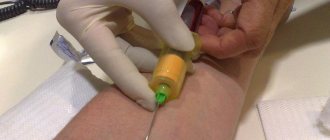Whether a woman is pregnant or not can be determined with high accuracy using a home pregnancy test two days after the delay. But are there reliable signs of pregnancy that indicate pregnancy already before the delay? We know what signs indicate early pregnancy from surveys on our forum. If you are interested in the results of a survey about the first signs of pregnancy before and after a delay, then go to our forum. In this article we will describe in detail all the common first symptoms of pregnancy that our users tell us about:
There are many pregnancy signs that can indicate pregnancy at its earliest stages. But we must remember that every woman’s body is individual, so there cannot be a generally accepted algorithm by which pregnancy can be accurately confirmed. Below you can see the 12 most common signs of pregnancy. Perhaps you have already noticed one or another symptom in your body?
- Swelling of the mammary glands
- Pain in the lower abdomen
- Fatigue, drowsiness
- Decreased immunity
- Change of taste preferences
- Change of mood
- Bloody discharge from the genitals
- Toxicosis
- Frequent urge to urinate
- Increase in basal temperature
- Positive pregnancy test
- Delayed menstruation
Read detailed explanations of these signs, they all have a logical explanation. And when can they occur? In fact, the first signs of pregnancy or symptoms indicating pregnancy can already be noticed before the missed period. Some women notice pregnancy a few days after conception, i.e. at the moment when the fertilized egg penetrates the wall of the uterus.
When does conception occur?
Conception can only occur in the middle of a woman's cycle, which usually lasts from 25 to 35 days. If you had unprotected intercourse during this time, then there is a high probability that conception will occur. The introduction of a fertilized egg into the wall of the uterus usually occurs on the 5th or 6th day after conception , and only from this moment can the first signs of pregnancy occur.
This means that any signs immediately after sexual intercourse or for several days after it are physiologically excluded. At this moment, contact between the mother’s body and the fertilized egg simply does not exist.
Symptoms of conception before delay
Frequent urination.
The slightly increased size of the uterus begins to put pressure on the bladder, and the urge to go to the toilet occurs faster than usual. In addition, hormonal changes provoke the organ to work harder. If urination is accompanied by pain, then this is a symptom of cystitis, so it is important to consult a doctor for timely treatment.
Hypersensitive sense of smell.
Girls note that a clear sign of pregnancy on the 23rd day of the cycle, when you don’t even suspect an interesting situation, is intolerance to aromas. Some people run out of their offices when a plume of perfume comes from a colleague, while others cannot walk through the market where they sell fish and meat. Almost everything causes disgust - the smell of shoe polish, sweat, even the usual dishwashing detergent and soap.
Emotional swings.
Tears, apathy, affection, irritability and other feelings can change over the course of an hour. Although many girls feel nervous and hot-tempered before their period, experienced mothers claim that during pregnancy the mood swings are completely different and much brighter.
Sensitivity of the mammary glands.
The breasts increase in size, become heavy, and touching the nipples becomes quite painful. The venous network appears more than usual. The nipple halos may darken slightly; they will acquire a dark brown color later.
Increased gas formation.
Progesterone, produced during pregnancy on the 23rd day of the cycle, slows down digestion, and therefore the intestines swell. As a result, girls cannot fasten their favorite jeans at the waist, although a couple of days ago they were just right.
Enlarged uterus.
The abdomen becomes larger in size as blood flow to the reproductive organs increases.
Nagging pain in the lower abdomen.
The sensations are similar to PMS discomfort.
Nausea.
A slight aversion to food indicates the onset of early toxicosis, which will continue until the end of the first trimester. This symptom appears on the 5-7th day after conception.
Low-grade body temperature.
Expectant mothers noticed that even before the delay, the thermometer showed 36.9-37.1 even without signs of a cold. This is considered a natural physiological response to progesterone production. If menstruation has arrived, then this temperature is a symptom of a sluggish inflammatory process.
Changing taste preferences.
As they say, it begins to “crave salty and spicy things.” This is the result of the same hormonal changes.
Headache.
If you were planning a pregnancy and expect an expected conception, you should not take painkillers; it is better to take two Magnesium B6 tablets or, in extreme cases, Paracetamol.
Discomfort in the lower back.
Hormonal changes and increased blood supply to the pelvic organs cause a feeling of heaviness in the lower abdomen and lumbar region. There is a transformation in the architecture of the body, stretching of the ligaments for successful bearing of the baby.
Change in appetite.
It is expressed in two extremes - “wolf hunger” with uncontrolled eating of everything in the refrigerator, or indifference to food.
Cold.
The body’s natural reaction is a decrease in immunity as a sign of pregnancy; on the 23rd day of the cycle or earlier, a girl may experience a runny nose, sore throat, and general malaise. At this time, the body is especially susceptible to viruses and various infections. If you suspect pregnancy, you should not take cold medications.
Increase in basal temperature.
The temperature is measured immediately after waking up. Without getting out of bed, the thermometer is inserted into the rectum. It is necessary to measure daily after ovulation. If 37.0-37.2 lasts until the end of the cycle, then pregnancy has definitely occurred.
Minor spotting discharge.
This is a sign of implantation of the fertilized egg, which, like a drill, penetrates the uterine cavity, and blood vessels are destroyed.
Dizziness and fainting.
Expectant mothers often lose consciousness in transport and in stuffy rooms. Low glucose levels and hypoxia in the early stages can cause short fainting spells.
Drowsiness and fatigue.
Have you stopped recognizing yourself? Previously, we completed all the tasks on the list, but now we only have enough energy for two or three items. Fatigue, daytime sleepiness and reluctance to get up in the morning are a clear sign that pregnancy has occurred.
Lack of breathing.
While rebuilding, the body supplies most of the oxygen to the embryo, which can cause other organs to suffer. Therefore, when climbing stairs or while walking at an accelerated pace, breathing may become erratic and fatigue may set in.
Restless dreams.
A hormonal explosion leads not only to physiological, but also psycho-emotional changes, which makes it difficult to get enough sleep. The body seems to signal the emergence of life. It is acceptable to drink tea with lemon balm or valerian tablets at night, but no aggressive sleeping pills.
Pain in the lower abdomen
Starting from the 4th week, i.e. a week after conception, a pregnant woman may feel pain in the lower abdomen, and some women experience back pain instead. The age of the embryo, the unborn baby, is only one week. Many women do not even suspect they are pregnant at this time, and possible implantation bleeding is mistaken for menstruation. Since such pain is often spasmodic, women think that it is associated with the beginning of a new cycle, and not with the onset of pregnancy. Relaxation and warm (not hot!) heating pads help against these pains.
Premenstrual syndrome
This syndrome, known as PMS, begins around day 21 of the cycle. Why approximately? The fact is that every woman has different cyclicity and duration of menstruation.
If a representative of the fair sex has a tightening in the lower abdomen, this means that she has premenstrual syndrome.
What other symptoms of PMS, besides discomfort in the abdomen, can be identified:
- Increased excitability.
- Irritability.
- Sudden change of mood.
- Increased appetite.
- Insomnia. Some people, on the contrary, experience drowsiness.
- Anxiety and aggression.
- Depressive state, melancholy.
- Flatulence (bloating).
- Feeling of a lump in the throat.
- Difficulty breathing, lack of air.
- Swelling of the limbs.
- Increased fatigue.
- Difficulty concentrating.
- Dizziness and headaches, etc.
It is a mistake to think that all these symptoms appear exclusively in all women. No, that's not true. Some girls may experience headaches and drowsiness, while others may experience depression and a lump in the throat.
If a woman has tightness in her lower abdomen a week after ovulation, this may be a manifestation of premenstrual syndrome.
Other symptoms of this condition:
- bloating;
- nausea;
- mood instability;
- breast tenderness;
- constipation or loose stools;
- headache;
- fatigue;
- aching in the lower back.
Most women experience symptoms such as breast tenderness, bloating and muscle pain in the days leading up to their menstrual period. These are normal premenstrual symptoms.
Fatigue
Many women begin to feel more tired as they get pregnant. This is due to an increase in the level of the hormone progesterone, which has a sedative effect on a pregnant woman. Progesterone is produced in the mother's ovary by the corpus luteum, which remains after ovulation at the site of the follicle. This hormone will be produced until about 10-11 weeks of pregnancy and is necessary to support pregnancy and prevent miscarriage.
In addition, fatigue also arises from the fact that already in the very early stages a woman’s body is working “for two”. A lot of energy is required not only by the development of the embryo, but also by the growth of the placenta, which will provide the baby with everything vital throughout pregnancy.
Causes of the disease
A woman's body is structured differently than a man's.
Very often, women face problems such as menstrual irregularities and complications during pregnancy. This is not typical for men. Pain is not a disease, but its manifestation.
Pain is a subjective symptom. Some people tolerate pain well, while others are more sensitive.
If there is pain in the lower abdomen, the underlying cause should be determined. To do this, it is necessary to collect all the patient’s complaints and make a preliminary diagnosis.
Decreased immunity
A painful condition and malaise sometimes appears as a result of fatigue, which in itself is already a sign of pregnancy. In addition, at the time of pregnancy, a woman’s immune system is usually weakened. The embryo is half a “foreign element” (including the father’s DNA), and the task of the immune system is to reject everything foreign. To prevent this from happening, under the influence of hormones, the immune system is weakened and allows the embryo to join the mother's body.
Condition of the cervix during pregnancy
The menstrual cycle is interrupted, and therefore the cervix also does not have a cycle.
However, as before, natural changes are observed in it.
- Thick mucus forms, blocking possible access to the organ cavity in which the unborn child develops.
- Closing of the external pharynx is observed.
- Until about the sixth week of pregnancy, the enlarged uterus softens, while its cervix is still dense and high. Over time, it becomes somewhat softer, and the neck lengthens.
- From the second half of pregnancy, the hormonal system determines the changes that are observed in the structure of the tissue. The cells located in the cervix accumulate more water, and the level of leukocytes increases in the intercellular space.
Cervical self-diagnosis is not recommended during pregnancy. This is due to increased tissue vulnerability and risk of infection. A gynecologist should directly assess its condition and consistency.
Change of taste preferences
Everyone is familiar with the well-known “salty craving.” In the very early stages, pregnant women may experience an increased appetite for salty, spicy, sweet, meat or unusual exotic food combinations, such as cheese with jam or potatoes with jam. And at the same time, there will be an aversion to coffee, cigarette smoke and certain foods. Moreover, sometimes just thinking about them is enough for a wave of toxicosis to roll over.
Why a change in taste preferences occurs is not yet completely clear to science, but some scientists believe that this is a brilliant move of nature that forces a pregnant woman to give up something that could harm the nascent life. Cornell professor of neurobiology Paul Sherman argues that changes in taste preferences and toxicosis are even beneficial, as they protect the fetus from substances harmful to it. During his research, the professor provided other evidence for his theory:
Quote
- Nausea and vomiting decrease after 18 weeks of pregnancy because by this time the fetus becomes less vulnerable to the effects of chemical substances.
- Women with very severe morning sickness have lower rates of spontaneous abortion than other pregnant women.
- Historically, intensely flavored meats and vegetables were likely to contain parasites, pathogens, and plant toxins; These products are usually dangerous to the fetus. Therefore, not only they, but also alcohol and cigarette smoke, which can also harm the fetus during the formation of organs, cause nausea.
- In peoples who consume more intensely flavored meats and vegetables, as well as alcohol, toxicosis is more common than in peoples who consume predominantly other foods.
Presumably, this reaction of the body can even prevent early miscarriages, says Paul Sherman.
In addition, pregnancy, especially at its earliest stage, radically changes a woman’s hormonal levels, and this in turn affects the senses of taste and smell.
Self-diagnosis of the cervix by day of the cycle
The method is quite specific. A woman needs to use tactile sensations to draw conclusions about the condition of the cervix. Using observation data, you can track the onset of ovulation and upcoming periods, as well as suspect pregnancy before a delay. It will take several months to accurately determine the condition of the cervix, its position and consistency.
In order for the results of the study to be objective, it is necessary to follow a few simple rules.
It is advisable to start research after your period. Observations must be carried out daily at a certain time. It is not recommended to perform the procedure if there is infection or inflammation. Before the examination, you should wash your hands well. To ensure the reliability of the result, it is necessary to use special poses that allow you to feel the cervix: squatting or spreading your legs wide apart, placing your leg set aside on the bedside table
It is important to use the same position when examining the cervix and not to replace it with another. The index or middle finger should be used to assess the cervix. There should be no sharp nails on the finger, so as not to damage the delicate mucous membrane. You should not rely only on memory, but write down the results of your observations in a notebook specially designated for this purpose.
Bloody discharge from the genitals
In the very early stages of pregnancy, spotting may appear. They occur a few days after fertilization at the moment when implantation occurs, that is, the implantation of the embryo into the wall of the uterus. But this is not a mandatory sign of pregnancy or a guarantee that pregnancy has occurred.
If pregnancy is very desired, then any discharge should be discussed with your doctor as early as possible. Sometimes they occur due to a lack of the hormone progesterone and may indicate a threat of miscarriage. In this case, your doctor will do a blood test and prescribe medication at the appropriate dosage to support the pregnancy.
Early toxicosis
The most common and well-known sign of pregnancy is early toxicosis (nausea). It occurs early in pregnancy - usually between 6 and 12 weeks, but in some cases earlier. Most often, attacks of nausea occur in the morning, but for some women, toxicosis can also roll in like a wave throughout the day, regardless of food intake. In rare cases, nausea progresses to vomiting, but this happens very rarely and even less often in very early pregnancy.
Toxicosis itself is one of the very unpleasant signs of pregnancy, but its presence in the early stages can be considered a positive sign, since it indicates the presence of a healthy, stable pregnancy and a constant increase in the hCG hormone. It must be remembered that in the opposite case, the absence of toxicosis does not indicate the absence of pregnancy. Every woman is individual.
Frequent urge to urinate
Usually, right at the beginning, women notice that they need to go to the toilet much more often. The reason is the hormone progesterone, which is produced from the very beginning of pregnancy and has a relaxing effect on the muscles of the body. The smooth muscles that form the wall of the bladder are no exception. When they relax, the urge to urinate becomes more frequent.
In addition, increased blood circulation increases the load on the kidneys, which in turn accelerates the formation of fluid in the bladder. Therefore, if you suddenly have a frequent urge to urinate, this may be a sign of pregnancy.
Increase in basal temperature
Another indicator of pregnancy is an increased basal temperature. Women who regularly measure it and keep their basal temperature chart notice that the temperature does not drop as usual shortly before menstruation, but remains high.
Sometimes on the basal temperature chart you will see an additional rise in basal temperature, which is called the “third phase”. In this case, the temperature not only does not fall, but, on the contrary, rises even higher than in the second phase of the cycle. The “third” phase is a very good sign of pregnancy.
If the temperature remains at a high level for more than 16 days after ovulation, then the pregnancy test should already be very likely to be positive.
Why is algomenorrhea dangerous?
Pathology such as algodismenorrhea often occurs. This is a condition in which painful menstruation is observed. In most cases, with algodismenorrhea, sharp, cramping pain is noted. The latter can also be pulling. The first complaints may appear a few days before menstruation. Pain with algodismenorrhea has the following features:
- is pulling or cramping;
- may radiate to the sacrum or perineum;
- combined with general malaise (weakness, fainting);
- may be accompanied by nausea, increased sweating, stool disturbances, and headache.
Positive pregnancy test
Of course, a positive pregnancy test is one of the most reliable signs of early pregnancy. Already in the 5th week of pregnancy, i.e. from the first day of the delay, you can perform a regular pregnancy test at home. The reliability of such a test is 99% if you are more than two days late. In addition, there are early pregnancy tests that promise results 10 days after ovulation, but they are not always reliable.
If you want to be 100% sure, then you need to contact a gynecologist or a laboratory for a blood test for the hCG hormone. This hormone appears in the blood already on the 9th or 10th day after ovulation, i.e., in any case, before the delay. The presence of this hormone in the blood is no longer a sign, but a clinical confirmation of pregnancy.
Late ovulation
Typically, the egg is released 14 days before the menstrual cycle. The late process occurs in women with a long cycle, more than 32 days, and is not a sign of infertility. When ovulation occurred on the 23rd day of the cycle, is pregnancy possible? The process of conception and the course of pregnancy do not depend on the time of maturation of the egg. With late ovulation, there is a higher chance of having a boy.
Signs of pregnancy on the 23rd day of the cycle with a 28-day menstrual period or more can clearly indicate conception. But these will only be guesses and assumptions, because a 100% result will be given by a hCG test and ultrasound examination.
Delayed menstruation
Of course, a missed period is one of the fairly reliable signs of pregnancy, but it is important to remember that there are other reasons that can lead to amenorrhea. For example, time zone changes during travel that take the body out of its normal rhythm, hormonal imbalance, stress, serious illness or shock. Menstruation may be delayed after stopping medications, surgery, or severe weight loss (for example, due to diet or illness). Pregnancy can be reliably established in such cases only with a blood pregnancy test.
And vice versa, sometimes it seems that there is no delay, but menstruation occurs scanty and unusual. This occurs in some women despite pregnancy. At this moment, a woman may experience spotting that coincides with menstruation, but it does not indicate the beginning of a new cycle, but is one of the first signs of pregnancy.
Manifestations of endometriosis
Very often the stomach hurts with a disease such as endometriosis. It accounts for 10% of all cases of gynecological pathology. In all women, the inside of the uterus is lined with endometrium. With endometriosis, this layer grows and extends beyond the mucous membrane of the organ. This disease most often affects people aged 30 to 50 years. The following causes of endometriosis are distinguished:
- hormonal imbalance (high concentrations of follicle-stimulating and luteinizing hormone);
- hereditary predisposition;
- decreased immunity;
- metaplasia (transformation of one tissue into another).
Specific signs of pregnancy
The above signs of pregnancy are the most common according to the results of surveys of our users. But since each organism is individual, other signs may occasionally appear, for example:
- Intestinal disorders
- Minor pain in the lumbar region
- Skin changes
Bowel dysfunction may be associated with an increase in the hormone progesterone, which has a relaxing effect on the intestinal muscles. The same hormone can cause pain in the lumbar region. A relaxed muscle corset increases the load on the spine, which in turn leads to unpleasant sensations.
Various changes in the skin can occur due to a sudden rise in a large number of hormones: progesterone, estrogen, prolactin, hCG. A sharp rise in the level of these hormones is necessary to maintain a healthy pregnancy, and each woman can react individually to such a dramatic hormonal change.
It is important to remember that any of the above signs of pregnancy (except for a positive pregnancy test 2 days after the delay) are indirect signs. Their presence does not guarantee the presence of pregnancy, at the same time, the absence of all these signs cannot be taken as confirmation of a failed pregnancy. Each woman’s body is individual, so various reactions in the early stages of pregnancy can be completely different. Even in women who have already been pregnant, a repeat pregnancy may experience signs that were not present in the first pregnancy or may lack signs that are already familiar from a previous pregnancy.
The most accurate sign of pregnancy is still a blood test for hCG. If this hormone is present in the blood, then you are pregnant. If not, then pregnancy is unfortunately excluded, even if all of the above signs are present.
Development of vaginitis
With vaginitis (colpitis), aching pain in the abdomen can bother you on any day of the cycle. Vaginitis is the most common gynecological pathology. Its share in the general structure of diseases of the genital organs in women is 60%. It is predominantly an infectious disease. The causative agents can be cocci, mycoplasmas, chlamydia, gonococci, Escherichia coli, Pseudomonas aeruginosa. The following factors contribute to the development of colpitis:
- endocrine disorders;
- failure to comply with intimate hygiene rules;
- promiscuity;
- hormonal disorders;
- injury to the genital mucosa;
- lack of vitamins in the body;
- decreased immunity;
- a history of abortion or diagnostic curettage.
Vaginitis (colpitis) is manifested by the following symptoms:
- nagging pain in the lower abdomen;
- itching;
- burning;
- discharge from the genital tract;
- frequent urination;
- swelling of the labia.
The severity of pain depends on the form of inflammation. In acute vaginitis, the pain is more pronounced. With chronic inflammation, symptoms may appear periodically (during an exacerbation).










